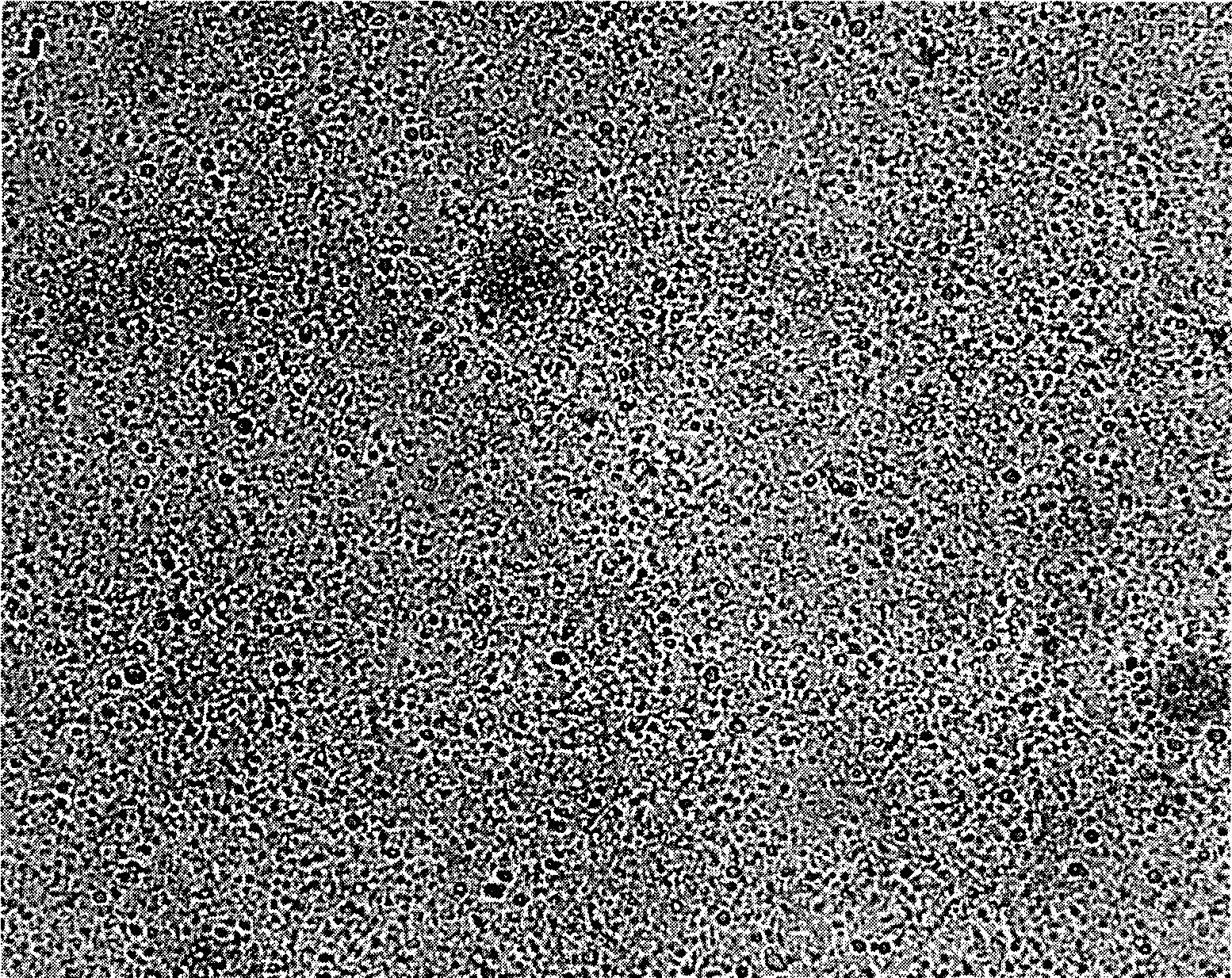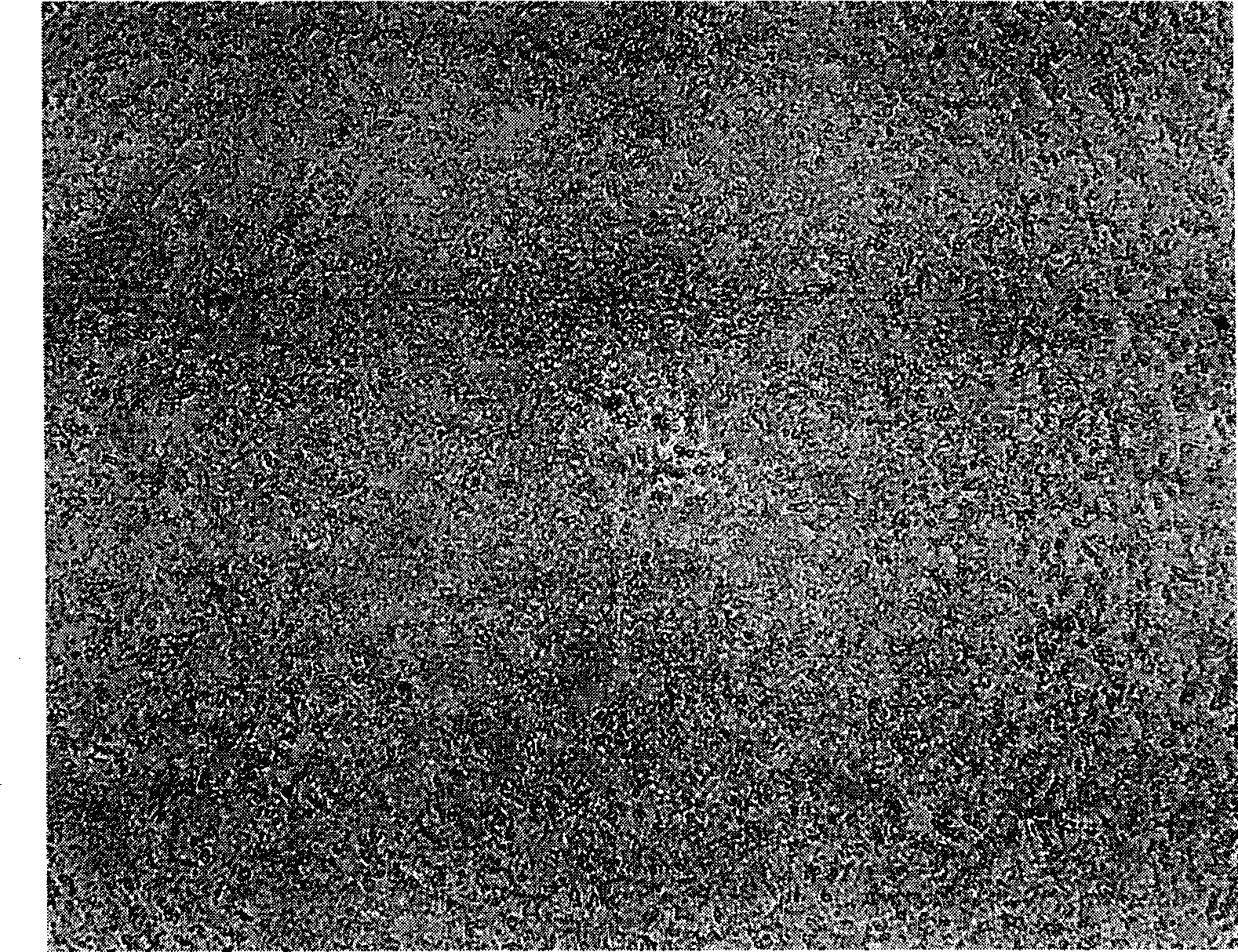Amoluofen emulsifiable paste
A technology of amorolfine and cream, applied in the field of medicine, can solve the problems of cream damage, uneven particle size distribution of cream, oil-water separation and the like
- Summary
- Abstract
- Description
- Claims
- Application Information
AI Technical Summary
Problems solved by technology
Method used
Image
Examples
Embodiment 1
[0063] Recipe for Cream 1
[0064] Composition of preparation prescription Component content in every 100 grams of cream
[0065] Amorolfine Hydrochloride 278mg
[0066] Macrogol-7 stearate (tefose 63) 22g
[0067] Purified water up to 100g
[0068] making process:
[0069] (a) polyethylene glycol-7 stearate is melted at 60 degrees;
[0070] (b) heating purified water to 60 degrees;
[0071] (c) under continuous stirring at 1000 rpm, transfer the hot purified water into the polyethylene glycol-7 stearate liquid, and stir for 20 minutes;
[0072] (d) Turn the mixture to 30 degrees, stir continuously at 1000 rpm for 15 minutes, add the medicine and stir evenly;
[0073] (e) filling to obtain amorolfine cream.
[0074] The morphology of the obtained cream was observed under an optical microscope, and the cream was placed at 40°C and 60°C for 10 days respectively, and cooled to room temperature after taking it out to investigate the change in properties ...
Embodiment 2
[0076] Recipe for Cream 2
[0077] Composition of preparation prescription Component content in every 100 grams of cream
[0078] Amorolfine Hydrochloride 278 mg
[0079] Macrogol-7 stearate (tefose 63) 18g
[0080] 5.5 grams of liquid paraffin
[0081] Phenoxyethanol 0.45g
[0082] Appropriate amount of sodium hydroxide
[0083] Purified water up to 100g
[0084] making process:
[0085] (a) polyethylene glycol-7 stearate and liquid paraffin are melted at 60 degrees;
[0086] (b) Heat the purified water to 60 degrees, add phenoxyethanol to dissolve;
[0087] (c) under continuous stirring at 1200 rpm, transfer (b) into (a) and stir for 20 minutes;
[0088] (d) Turn the mixture to 35 degrees, stir continuously at 1200 rpm for 15 minutes, add amorolfine hydrochloride and stir evenly, then add sodium hydroxide solution to adjust the pH value to 6.0-7.0;
[0089] (e) filling to obtain amorolfine cream.
[0090] The morphology of the obtained cream wa...
Embodiment 3
[0092] Recipe for Cream 3
[0093] Composition of preparation prescription Component content in every 100 grams of cream
[0094] Amorolfine Hydrochloride 278mg
[0095] PEG-7 Stearate (Tefose 63) 14.5g
[0096] 6 grams liquid paraffin
[0097] Carbopol 980 0.02g
[0098] Phenoxyethanol 0.45g
[0099] Disodium edetate 0.005 g
[0100] Appropriate amount of sodium hydroxide
[0101] Purified water up to 100g
[0102] making process:
[0103] (a) polyethylene glycol-7 stearate and liquid paraffin are melted at 60 degrees;
[0104] (b) Add water to swell carbomer for 6 hours, heat to 60 degrees, add phenoxyethanol and disodium edetate to dissolve;
[0105] (c) under continuous stirring at 1200 rpm, transfer (b) into (a) and stir for 20 minutes;
[0106] (d) Turn the mixture to 35 degrees, stir continuously at 1200 rpm for 15 minutes, add the drug and stir evenly, add sodium hydroxide solution to adjust the pH to 6.5-7.5;
[0107](e) filling to obtai...
PUM
| Property | Measurement | Unit |
|---|---|---|
| melting point | aaaaa | aaaaa |
| melting point | aaaaa | aaaaa |
Abstract
Description
Claims
Application Information
 Login to View More
Login to View More - R&D
- Intellectual Property
- Life Sciences
- Materials
- Tech Scout
- Unparalleled Data Quality
- Higher Quality Content
- 60% Fewer Hallucinations
Browse by: Latest US Patents, China's latest patents, Technical Efficacy Thesaurus, Application Domain, Technology Topic, Popular Technical Reports.
© 2025 PatSnap. All rights reserved.Legal|Privacy policy|Modern Slavery Act Transparency Statement|Sitemap|About US| Contact US: help@patsnap.com



